Effective Strategies for Evicting Birds from Ceilings
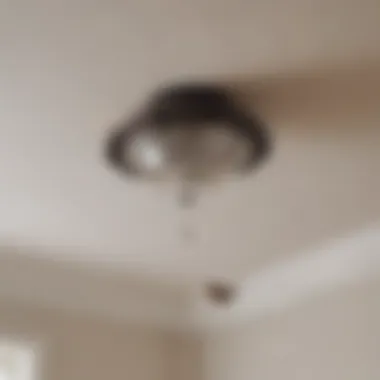
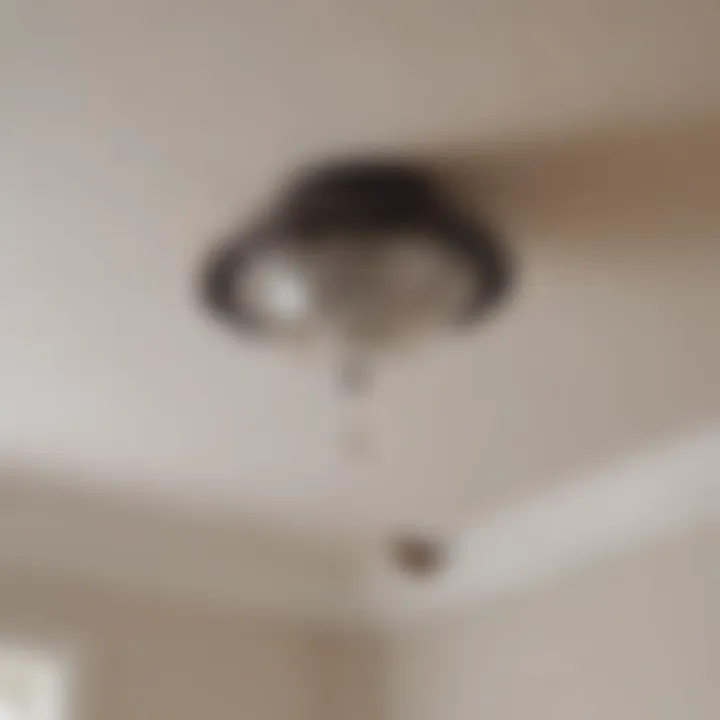
Intro
Birds can often find unintended refuge in the deceptive seams of our homes, particularly within ceiling spaces. This situation may not only result in discomfort and noise but can also pose risks to the structural integrity of a dwelling. Understanding the fundamental aspects of the issue can lead to more effective solutions. This article will delve into various strategies for managing bird populations in these enclosed spaces, focusing on humane and sustainable practices.
Understanding the Pest
Identification
Identifying the specific bird species intruding into ceiling spaces is a crucial first step. Common culprits include house sparrows, starlings, and pigeons. These birds often seek shelter to nest or escape from predators. Signs of infestation can include chirping sounds, droppings, or nesting materials visible around entrance points.
Life Cycle
Understanding the life cycle of these birds further aids in management. Generally, birds lay eggs in nests during spring and summer. This period can see increased activity. A typical nest can contain several eggs, with incubation lasting about two weeks. If intervention is not timely, the population can rapidly escalate. Most common birds can breed twice a season, enhancing the urgency of addressing the situation promptly.
Pest Prevention Strategies
Environment Modification
To effectively deter birds, homeowners can alter their environment. This includes:
- Minimizing food sources: Secure trash bins and remove pet food outdoors.
- Clearing nesting sites: Regularly inspect and clear potential nesting materials from roof eaves and ledges.
- Using reflective surfaces: Installing reflective tape or other shiny materials can discourage bird landing.
Physical Barriers
Employing physical barriers is a direct way to limit access to ceiling spaces. Available options can include:
- Netting: Installing bird netting can effectively block entry points.
- Spikes: Bird spikes can prevent nesting on ledges and beams.
- Seal entry points: Check for and seal any gaps or holes that could serve as entryways.
Control Methods
Chemical Control
Though less favored in humane approaches, some might consider chemical deterrents. However, it is essential to note that many chemicals can harm birds. Solutions, if employed, should have minimal impact on the surrounding ecosystem. Therefore, it is recommended to err on the side of caution and embrace more natural choices.
Biological Control
Another method is to use biological deterrents such as decoys or sonic emitters. These tools can create an incomplete habitat for birds, prompting them to relocate. Making use of decoys resembling predatory birds can be helpful.
"Humane bird control should always be the primary goal, promoting coexistence rather than eradication."
Closure
Effective bird eviction from ceiling spaces is achievable through careful planning and execution of both prevention and control measures. Understanding the behavior and life cycle of these birds will guide homeowners and professionals in selecting suitable strategies. The emphasis on humane practices not only aids in resolving immediate issues but contributes to the ecological balance as well. Integrating these methodologies ensures notjust effective results but also fosters a more harmonious living environment.
Understanding the Problem
Understanding the presence of birds in ceiling spaces is critical for homeowners. This issue is not just an inconvenience; it bears significant consequences on both human living conditions and bird welfare. Divulging into the reasons birds seek these spaces and the ensuing risks presents a clearer picture of the challenge at hand. By grasping these foundations, effective eviction strategies can be devised.
Why Birds Choose Ceiling Spaces
Birds often find ceiling spaces attractive due to their sheltering nature. These areas provide a sense of safety from predators and harsh weather conditions. The enclosed environment offers a perfect nesting site, where birds can raise their young in relative peace. Moreover, buildings with poorly sealed or maintained roofs often have gaps and openings, making it easy for birds to enter.
Additionally, access to food sources can encourage birds to nest in ceilings. Areas around eaves and gutters may trap food remnants, drawing certain species. House sparrows and starlings are among the most common intruders, lured by the proximity to human waste.
Understanding why birds choose these spaces aids in addressing the root cause of the problem. This insight is essential for homeowners seeking a long-term solution rather than a temporary fix.
Potential Risks of Bird Infestations
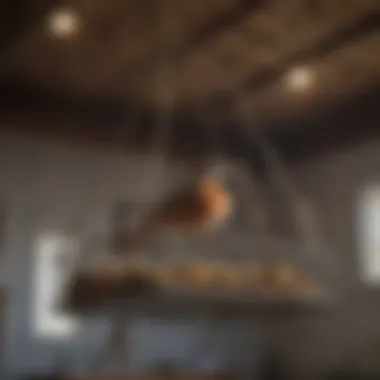
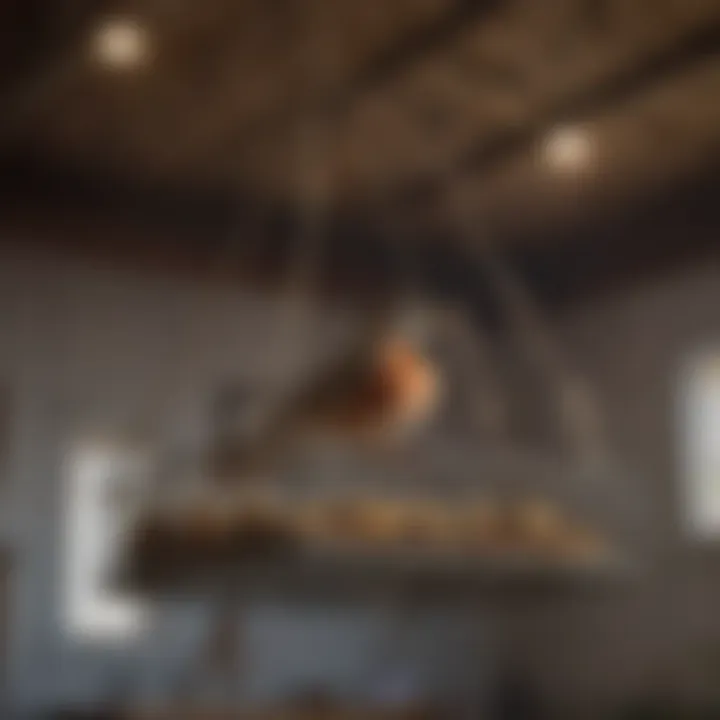
Bird infestations can result in various risks that affect health, property, and ecology. First and foremost, droppings from birds contain pathogens. These can lead to the spread of diseases such as histoplasmosis and salmonellosis, which can affect humans and pets.
Another serious concern is property damage. Bird droppings are highly acidic and can erode building materials. Over time, this can lead to costly repairs, especially for roofs and gutters. Additionally, nesting materials can obstruct ventilation systems, leading to compromised indoor air quality.
Furthermore, birds may cause structural issues. Nests made from twigs and other materials can accumulate and put pressure on roofs, potentially leading to leaks or collapse. The combination of health risks, property damage, and ecological imbalances underscores why addressing bird infestations is imperative for homeowners.
"Preventing bird infestations not only safeguards human health but also protects the structural integrity of the home."
Identifying Common Avian Intruders
Understanding the species that commonly inhabit ceiling spaces is essential for effective bird eviction strategies. Identifying these intruders allows homeowners to tailor their approach based on specific bird behaviors and nesting habits. Eagles and falcons might not invade residential ceilings, but smaller species like pigeons, sparrows, and starlings often do. Knowing which birds are present helps in the selection of appropriate deterrents. Additionally, recognizing the signs of infestation can prompt quick action before the situation escalates. Key information about each species can also inform legal and ethical considerations concerning their removal.
Species Frequently Found in Homes
In urban and suburban areas, certain bird species frequently seek shelter in ceiling spaces. One common offender is the House Sparrow. House sparrows are small, plump birds characterized by their brown and gray plumage. They often build nests in eaves and loft areas. Another prevalent species is the European Starling. These birds are known for their iridescent feathers and aggressive nesting behavior. Often, they will form large flocks, leading to significant infestations if not addressed early.
Additionally, the Rock Pigeon is widely recognized for cantering freely in urban environments. Their tendency to roost in hidden, high places within buildings makes them a binding nuisance. In more rural areas, the Barn Swallow might be encountered. Although these birds are protected by law, they can often find their way into homes, causing unwanted messes and noise.
Understanding which birds might invade is a foundational step towards managing an infestation effectively.
Behavioral Patterns of Common Ceiling Birds
The behaviors of common avian intruders provide valuable insights for successful eviction strategies. For example, House Sparrows are known for their strong attachment to nesting grounds. Once they establish a nest, they often return annually, making removal efforts necessary each season. Their adaptability and determination make them challenging to manage once they settle in.
European Starlings, on the other hand, display social behaviors, frequently nesting in colonies. Their communal nesting can make infestations grow rapidly if left unchecked. They are agile and skilled at finding entry points, which can complicate detection and removal efforts.
Rock Pigeons favor areas that provide both shelter and accessibility to food sources. They often return to the same spots, making management crucial not just for elimination but also for prevention of future returns.
The Barn Swallow is unique in its adaptation to human environments. While their nesting habits might seem charming, they can result in significant mess from droppings and nesting material. It’s essential to educate homeowners about the long-term implications of these behavioral patterns when considering eviction strategies.
By understanding the species and their behaviors, homeowners can better prepare for and manage intrusions effectively.
Initial Assessment and Inspection
Understanding the condition of your ceiling spaces is a crucial first step in addressing bird infestations. An effective eviction strategy hinges on a comprehensive assessment, helping to clarify the specific situation. Proper inspection can lead to decisive actions and avoid unnecessary complications later on. This step enables homeowners to gather relevant information about the type of birds present, the severity of the infestation, and potential health risks involved. Without this foundational knowledge, it would be difficult to implement the appropriate methods to evict the birds successfully.
Conducting a Thorough Inspection
To start, it is essential to conduct a thorough inspection of all ceiling spaces, which should include attics, rafters, and eaves. This examination should be systematic and thorough. Homeowners should look for signs such as droppings, feathers, and nests. Each of these clues can indicate not only the presence of birds but also the species involved.
Checklist for inspection:
- Look in less accessible areas like attic spaces.
- Check for nests behind beams, rafters, or in insulation.
- Observe droppings, as they can vary by species.
- Listen for sounds of birds which may indicate nesting activity.
By collecting these details, you will be able to determine the next steps more effectively, tailoring your eviction strategy according to the circumstances observed.
Identifying Entry Points
After a thorough inspection, the next critical phase is identifying entry points through which birds can access the ceiling spaces. Recognizing these openings is paramount, as it allows for targeted remediation to prevent future invasions.
Consider taking the following actions:
- Inspect for gaps and holes in eaves, vents, or rooflines.
- Examine around windows and doors where gaps may exist.
- Look for any areas where construction materials have decayed or where objects are haphazardly arranged, creating potential openings.
Keep in mind that even small openings can permit entry for various bird species, making it necessary to seal any discovered gaps. Proper identification of these entry points is critical to effectively securing the area from future bird infestations.
Physical Deterrents to Consider
The implementation of physical deterrents is a cornerstone in managing avian intrusions. These measures can effectively minimize the chances of birds settling in ceiling spaces, thereby preventing associated issues. By utilizing the right physical barriers, homeowners can safeguard their homes without causing harm to the birds, promoting a sustainable approach to pest control.
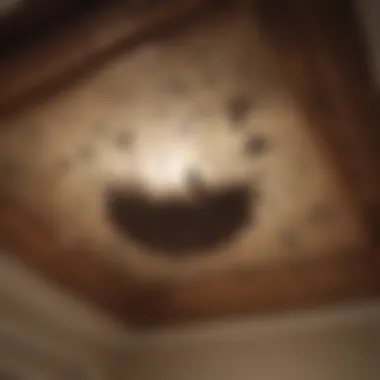

Physical deterrents create an environment that is less inviting for birds to nest or roost. This can lead to healthier living conditions, reduced noise, and decreased potential for damage that birds can cause. Furthermore, these strategies are often visible and immediate, making their effects easy to assess.
Using Netting and Screens
Netting and screens provide a practical solution for keeping birds out of ceiling spaces. They act as a barrier that prevents birds from entering while allowing air and light to pass through. This is especially useful for areas that are difficult to access or where birds are known to carry nesting materials.
When selecting netting or screens, factors such as durability and weather resistance are vital. A high-quality bird net, for example, can endure environmental conditions and serve its purpose effectively over a longer period. Proper installation is also necessary to ensure no gaps remain where birds could still enter.
Additionally, netting can be used in various configurations, such as draping over openings or securing along ledges. Homeowners should inspect these areas regularly for signs of wear or gaps, as even small openings can provide entry points for birds.
Installing Spikes and Other Barriers
Bird spikes and similar barriers serve as an effective deterrent to prevent birds from perching or nesting in unwanted areas. These products can be installed on ledges, rooftops, and other flat surfaces where birds typically land. Spikes do not harm birds but make it uncomfortable for them to settle.
When considering installation, it is important to choose spikes that are appropriate for the specific bird species you wish to deter. For instance, larger spikes may be required for larger birds like gulls, while smaller spikes would suffice for smaller songbirds.
The benefits of implementing spikes extend beyond just keeping birds away. They often require low maintenance and can be visually unobtrusive when installed correctly. In terms of cost-effectiveness, these solutions offer a long-term return on investment by significantly reducing the need for more complicated removal systems.
Key Takeaway: Effective physical deterrents like netting and spikes create an inhospitable environment for birds without causing them harm, aligning with humane approaches to pest management.
Behavioral Modification Techniques
Behavioral modification techniques are crucial in managing bird infestations within ceiling spaces. This approach does not rely solely on physical barriers or deterrents; instead, it addresses the underlying habits and behaviors of the birds. Understanding these behavioral patterns allows homeowners to create an environment that is less inviting to birds. This strategy also promotes humane practices by encouraging relocation rather than extermination.
Key elements of behavioral modification include both disrupting existing habits and preventing new ones. For instance, making the ceiling area less attractive can deter birds from returning. Moreover, these techniques tend to be environmentally friendly and sustainable, ensuring that interventions do not harm local wildlife. Ultimately, successful modification can lead to long-term resolutions, reducing the need for ongoing control measures and benefits both the homeowners and the avian population.
Disruption of Nesting and Roosting Habits
Disruption of nesting and roosting habits can be an effective strategy to reduce the likelihood of birds settling in ceiling spaces. This process involves removing nesting materials, as many birds utilize readily available items found within homes. By clearing away any debris or materials, you lessen the appeal of the space.
Furthermore, regular monitoring can help identify new nests early. If found, they should be gently removed. It’s essential to ensure that this is done at the right time to avoid harming any eggs or fledglings. Besides, discouragement can also be achieved by modifying the environment. This includes relocating or blocking off common areas that birds may seek out for roosting.
Sound Deterrents and Repellents
Sound deterrents present another practical aspect of behavioral modification strategies. Many birds are sensitive to sound, and certain frequencies can discourage them from returning. Devices that emit ultrasonic frequencies or distress calls can effectively alter bird behavior, making them feel unwelcome in the area.
While using these sound deterrents, it’s important to consider the effectiveness and the volume. Over time, birds may become accustomed to certain sounds, reducing the overall effectiveness. Therefore, variety in sound is key. Homeowners might rotate different devices or sounds to prevent birds from getting used to one specific type. Additionally, it's critical to select sounds that are safe and do not disturb other wildlife or residents.
Ecological Considerations
Understanding ecological considerations is essential when dealing with birds in ceiling spaces. These considerations affect not only the immediate environment in which the birds are found but also larger ecological systems. Evicting birds humanely supports biodiversity and maintains ecological balance. It is vital to adopt strategies that respect avian life while addressing the needs of homeowners.
Humane Removal Strategies
When it comes to removing birds from ceilings, humane strategies must be at the forefront. Harmful methods can lead to unnecessary suffering, which should be avoided. Instead, consider these approaches:
- Live Traps: Using live traps allows for the capture of birds without causing harm. These traps can be set up near entry points, providing a safe way to relocate the birds. Always check local regulations about bird trapping to ensure compliance.
- Soft Netting: Installing soft netting can help guide birds out of ceilings without distress. Ensure that the netting is properly secured to prevent any birds from becoming entangled.
- Decoy Nests: Creating decoy nests can distract birds from nesting in unwanted spaces. These fake nests help discourage avian visitors from settling in ceiling areas.
Humane removal is not just ethical; it promotes a positive relationship between humans and wildlife. By ensuring that the removal process does not harm the birds, homeowners can play an integral role in protecting local ecosystems.
Legal and Ethical Implications
Legal and ethical factors must be taken seriously when considering bird removal. Many bird species are protected by law, making certain removal methods illegal. It is crucial to familiarize yourself with the local wildlife protection laws before taking any action. Here are key points to remember:
- Legal Protections: Many birds, such as sparrows and pigeons, may seem common but can have specific protections in place. Research state or federal laws regarding protected species.
- Ethical Considerations: Beyond legality, there is an ethical responsibility to protect all wildlife. Employing harmful methods can negatively affect bird populations and disrupt the local ecosystem.
- Consultation: Consulting with wildlife professionals can provide clarity about the legal framework affecting bird removal. Experts can guide homeowners on effective and lawful strategies.
"Understanding legality and ethics can make the difference between a successful removal and legal troubles."
Navigating legal and ethical implications ensures that approaches taken are not only effective but also support ecological health.


Involving Professionals for Assistance
Birds in ceiling spaces can cause more than just nuisance. They can lead to damage and health risks if not addressed properly. This is where involving professionals can be crucial. Pest control experts bring specialized knowledge and tools that might not be available to the average homeowner. They can assess the situation, identify the specific species involved, and effectively implement strategies for removal and prevention.
Involving professionals not only saves time but also reduces the risk of improper handling of the birds, which can lead to damage or increased infestations. Specialists can offer tailored solutions that consider the building structure, local bird species, and environmental regulations. Thus, having an expert involved can enhance the chances of successful eviction while ensuring compliance with wildlife laws.
When to Call an Expert
There are specific scenarios where it is best to call an expert for bird removal. If you notice persistent bird activity despite using deterrents, an expert may be necessary. Additionally, if you suspect that birds are nesting in the space, it is important to act quickly, especially during breeding seasons. In such cases, removing nests can be illegal in some regions, making professional help essential to avoid fines.
Moreover, if the problem escalates, such as signs of damage to your ceiling or reports of pest-related health issues, you should consider professional intervention. They can conduct a comprehensive inspection and propose the best course of action. Some signs to watch for include:
- Presence of droppings
- Unusual noises coming from the ceiling
- Physical damage to the building structure
Choosing a Qualified Pest Control Service
Selecting the right pest control service is critical for effective bird eviction. First, research local companies accurately. Look for those with specific experience in handling avian issues. It is beneficial to read reviews to understand the experiences of other homeowners. Following are key factors to consider when choosing a service:
- Licensing and Certification: Ensure the company complies with local laws and has the necessary permits.
- Experience: Companies specializing in bird control will have a better understanding of the situation.
- Methods Used: Inquire about the techniques they employ. Look for humane methods that focus on exclusion rather than killing.
- Follow-up Services: A good pest control service will provide follow-up checks to ensure preventive measures are working.
"Choosing the right pest control expert can make all the difference in managing bird infestations effectively and humanely."
By involving professionals, homeowners can ensure a thorough, safe, and legal approach to managing bird issues in ceiling spaces. This professional assistance not only addresses the immediate problem but also helps in implementing long-term preventative strategies.
Preventative Measures for Future Incidents
Preventative measures play a crucial role in managing bird infestations in ceiling spaces. Implementing these strategies can prevent future problems and protect your home from potential damage. Prevention is often more effective and less costly than dealing with a full-blown infestation. Homeowners must consider various tactics that can be integrated into routine upkeep.
Maintaining Clean and Safe Environments
A clean and safe environment not only enhances the beauty of your home but also reduces attractiveness to birds looking for nesting sites. Birds are naturally drawn to areas that provide easy access to food and shelter. Keeping your surroundings clean can deter them effectively.
- Remove food sources: Regularly clearing pet food, bird feeders, and outdoor refuse can lessen the chance of attracting birds.
- Seal off potential nesting sites: Inspect your home for spots suitable for birds to nest. This includes gaps in eaves, vents, and chimneys. Use caulk or screens to secure these entry points.
- Trim trees and shrubs: Overgrown vegetation can serve as inviting homes for birds. Regular pruning will help control this, making your roof less appealing.
By focusing on cleanliness and habitat control, homeowners can significantly decrease the likelihood of bird invasions.
Regular Roof and Ceiling Maintenance
Regular maintenance is essential in keeping your home bird-free. Neglected roofs can develop issues that attract birds. By conducting consistent inspections, you can identify and address potential problems before they escalate.
- Inspect roofing materials: Look for loose shingles or tiles that can provide openings for birds. Repair or replace as needed.
- Check vents and chimneys: Ensure all vents are screened effectively, preventing birds from entering through these areas.
- Routine cleaning of gutters: Clogged gutters can lead to standing water, attracting birds. Regular cleaning promotes proper drainage and reduces attractiveness to birds.
"An ounce of prevention is worth a pound of cure. When it comes to birds in your ceiling, proactive measures can save time, money, and stress."
Incorporating these preventative measures not only improves the general condition of your home but also makes it less inviting to unwanted birds. By combining cleanliness with regular maintenance, homeowners position themselves to effectively minimize the chances of future infestations.
Finale and Summary of Best Practices
Evicting birds from ceiling spaces requires a thoughtful approach. The combination of effective strategies ensures both humane removal of the birds and long-term prevention of future infestations. It is critical to evaluate the methods discussed throughout the article, as selecting the right strategies can significantly impact both the avian population and the home environment.
Evaluating the Most Effective Methods
To choose the best strategies, it is essential to assess the situation carefully. Consider the factors such as the type of bird species involved, the extent of the infestation, and the layout of your home. Some practices may be more effective in certain scenarios than in others.
- Physical deterrents such as netting or spikes have shown great success in preventing access to ceiling spaces. Ensure they are installed correctly to maximize their effectiveness.
- Behavioral modification techniques can disrupt nesting and make areas less appealing to birds. For example, sound deterrents may work well, but their effectiveness often varies by species.
- To maintain a humane approach, consider ecological strategies that facilitate the relocation of the birds without harm. This avoids legal and ethical concerns associated with certain pest control methods.
Evaluation of these methods often leads to a combination of approaches for optimal results.
Long-Term Strategies for a Bird-free Ceiling
Implementing solutions for immediate concerns is paramount, but long-term strategies are equally vital. These are some considerations for maintaining a bird-free ceiling:
- Regular maintenance of roofing and exterior structures is crucial. Ensure that openings, gaps, and holes are sealed properly. Regular checks can prevent new access points from emerging.
- Cleaning and organization within your home can discourage nesting. Remove debris and potential nesting materials from roof spaces and adjacent areas. This will help in creating an unwelcoming environment for birds.
- Monitor and adapt your strategies. Keep track of any signs of re-entry by birds. A proactive approach enables timely action before a small problem escalates into a significant infestation.
Each of these measures contributes to a sustainable and effective plan for evicting birds from ceiling spaces. It is important to remember that persistence and diligence play crucial roles in achieving a long-term solution.







